8 Best Content Optimization Tools for WordPress in 2023
- What is content optimization?
- Best tools compared
- 8 best tools for optimizing content
- Why content optimization is important
- Why keywords matter
- On-page and off-page optimization
- 4 best practices for creating content
- Analyze and understand your audience
- Bonus: Optimize content for mobile devices
- Conclusion
Looking for the best online content optimization tools for WordPress?
Content optimization can boost search traffic to your WordPress website or blog. Fortunately, there are numerous user-friendly tools available that can enhance readability and improve search engine rankings.
In this article, we will provide a comprehensive list of the top online content optimization tools that industry experts rely on to increase website traffic.
What is content optimization?
Content optimization is the process of improving the quality, relevance, and readability of digital content to increase its visibility and effectiveness in search engine results pages (SERPs) and among target audiences.
This process involves identifying and incorporating relevant keywords, as well as improving website and content structure. Besides that, using meta descriptions and title tags, while ensuring that the content is engaging and easy to read.
The goal of content optimization is basically, to attract more visitors to a website, as a result of quality content. Secondly, to keep them engaged, and ultimately convert them into customers or loyal readers.
Effective content optimization can improve website traffic, user engagement, and conversion rates, besides its a critical component of successful digital marketing strategies.
Content optimization tools compared: prices, features, and rating
| Tool | Price (Starting) | Rating | Features |
|---|---|---|---|
| 1. All in One SEO | $49.50/year | 4.8 based on 1,376 reviews | On-page optimization, XML sitemap generation, content analysis, schema markup, local SEO, social media integration, WooCommerce SEO, AMP support |
| 2. Ahrefs | $99/month | 4.8 based on 1,000+ reviews | Keyword research, backlink analysis, content research, rank tracking, competitor analysis, site audit, SEO toolbar, SERP analysis |
| 3. SEMrush SEO | $119.95/month | 4.7 based on 143 reviews | Keyword research, site audit, backlink analysis, competitor analysis, rank tracking, content marketing tools, social media management |
| 4. Surfer SEO | $59/month | 4.7 based on 111 reviews | On-page optimization, content editor, SERP analyzer, competitor analysis, keyword research, content planner, performance tracking |
| 5. Clearscope | $350/month | 4.7 based on 59 reviews | Content optimization, keyword suggestions, topic analysis, content briefs, collaboration tools, integration with Google Docs, WordPress |
| 6. MarketMuse | Custom pricing | 4.6 based on 45 reviews | Content optimization, content planning, SEO strategy, content analysis, competitor analysis, topic modeling, natural language processing |
| 7. Frase | $45/month | 4.5 based on 62 reviews | Content optimization, keyword research, topic suggestions, content briefs, answer engine optimization, integrations with WordPress and Shopify |
| 8. Headline Analyzer | Free | 4.5 based on 20 reviews | Headline analysis, sentiment analysis, word balance, character count, word count, keyword suggestions, language analysis |
8 best tools for content optimization
1.) All-in-One SEO
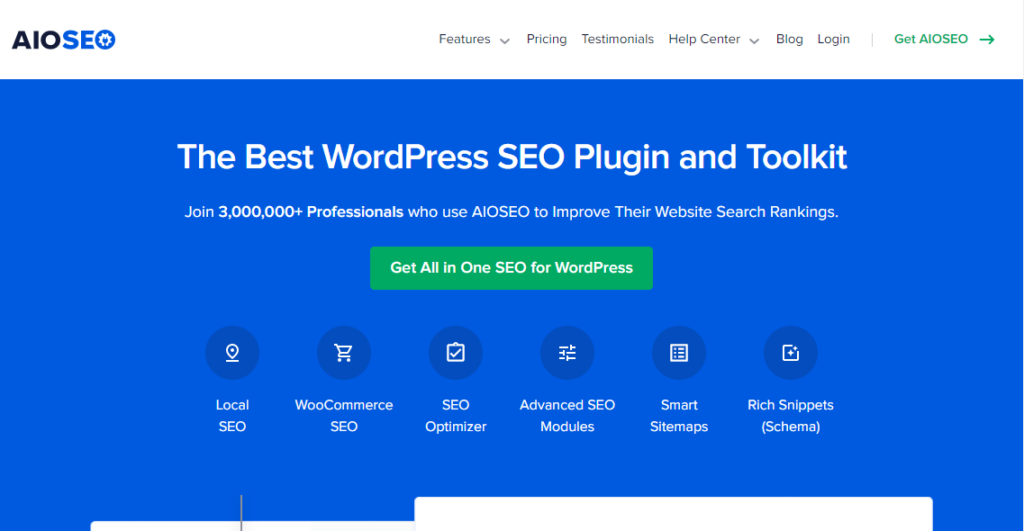
AIOSEO is regarded as the top SEO plugin for WordPress websites. As it offers a user-friendly interface with advanced optimization features that provide valuable SEO insights directly from your WordPress dashboard.
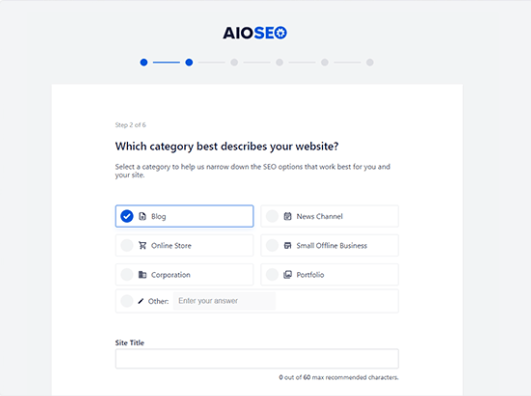
Upon the setup process, it performs an automatic SEO audit, as a result allowing you to assess the overall SEO health of your website.

In addition, it assists in finding semantic keywords related to your focus keyword, while the headline analyzer tool tests and improves your headline by giving a score and practical tips.
The plugin includes built-in integration with ChatGPT, which generates quality post titles and meta descriptions automatically. Based on your content, it suggests five accurate options, and with just one click, you can add your ideas.
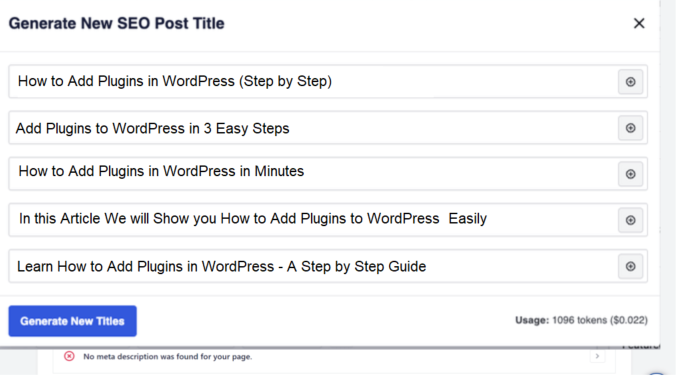
By using the plugin’s Link Assistant, you can obtain recommendations for relevant posts that you can link to and the appropriate anchor text to use internal linking to. With just a simple click of the ‘Add Link’ button, the link is automatically inserted into your post.
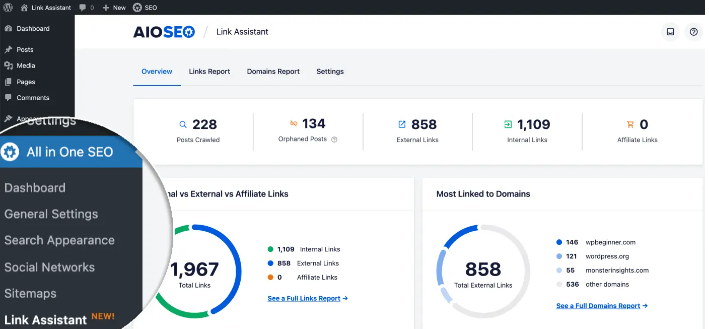
Automatic analysis of readability problems provides recommendations in the analysis section. Additionally, the plugin enhances the functionality of your XML sitemaps and enables you to include schema markup for your WordPress website.
2.) Ahrefs
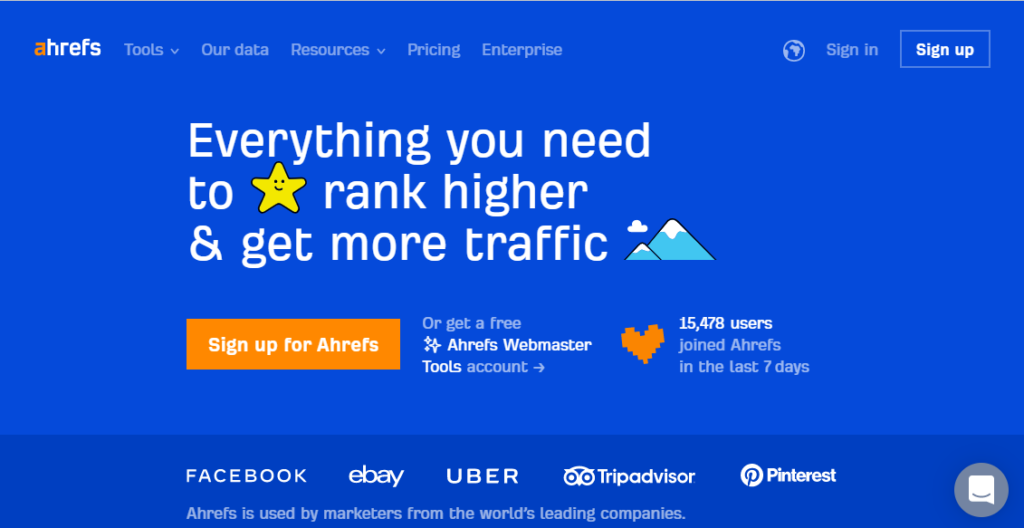
Ahrefs is a tool for keyword exploration and rank tracking, that comes with a site audit feature to optimize your entire website.
With the Keyword Explorer, you can generate keyword ideas for creating content by simply entering a keyword into the search box and then accessing a complete list of keyword suggestions.
The Rank Tracker function enables you to add the keywords you want to track to your dashboard and obtain an overview of your search engine rankings. You can view details such as your search engine visibility, percentage, average position, traffic, SERP features, and any changes in position.
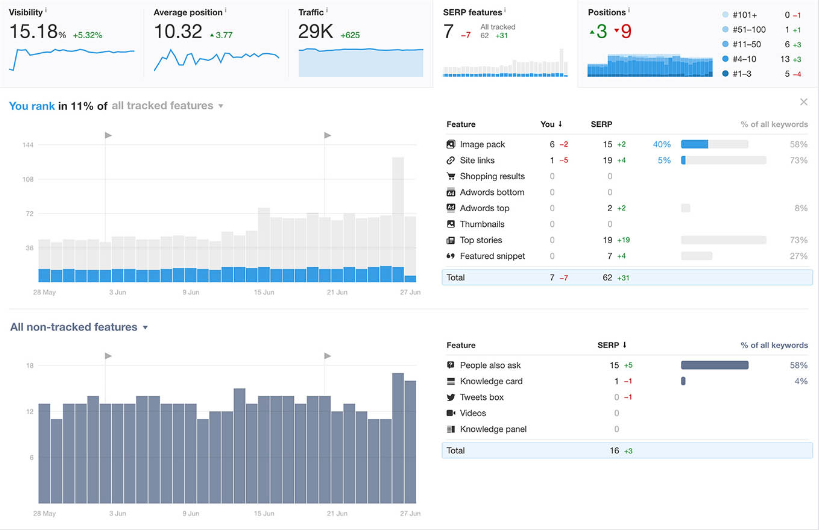
Moreover, it provides the option to investigate your competitors’ ranking keywords, allowing you to create new content focused on related keywords.
By using the Content Explorer feature, you can identify the most popular content for any keyword or topic and discover why those posts rank higher. You can then replicate their strategy in your content.
3.) SEMrush SEO
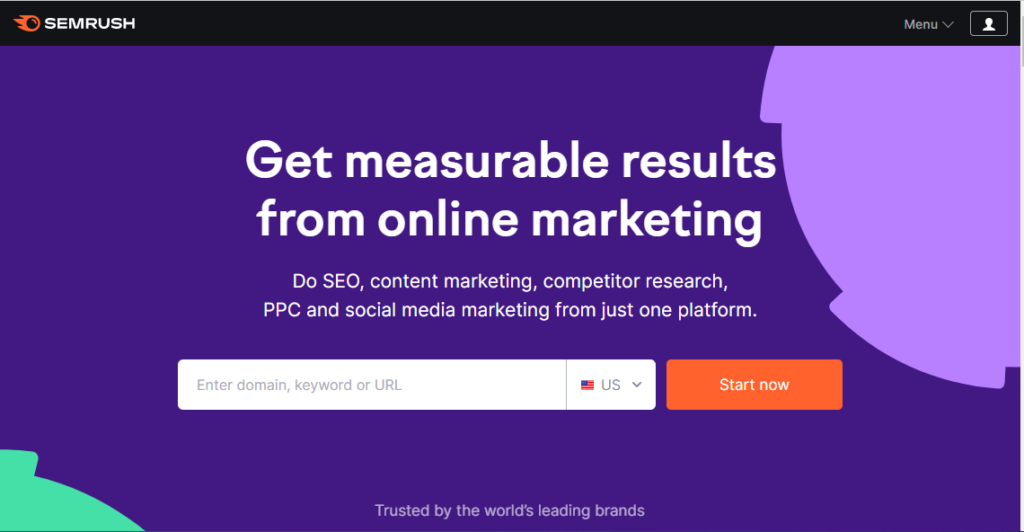
SEO Writing Assistant is an effective content optimization tool developed by Semrush, a leading SEO tool in the industry. This tool allows you to assess your content in real-time for SEO suggestions and boost the overall SEO score of your WordPress website’s content.
To begin, you input a focus keyword and receive content templates generated from the top 10 search results for that target keyword. The tool then provides scores for readability, SEO, originality, and tone based on competitor content.
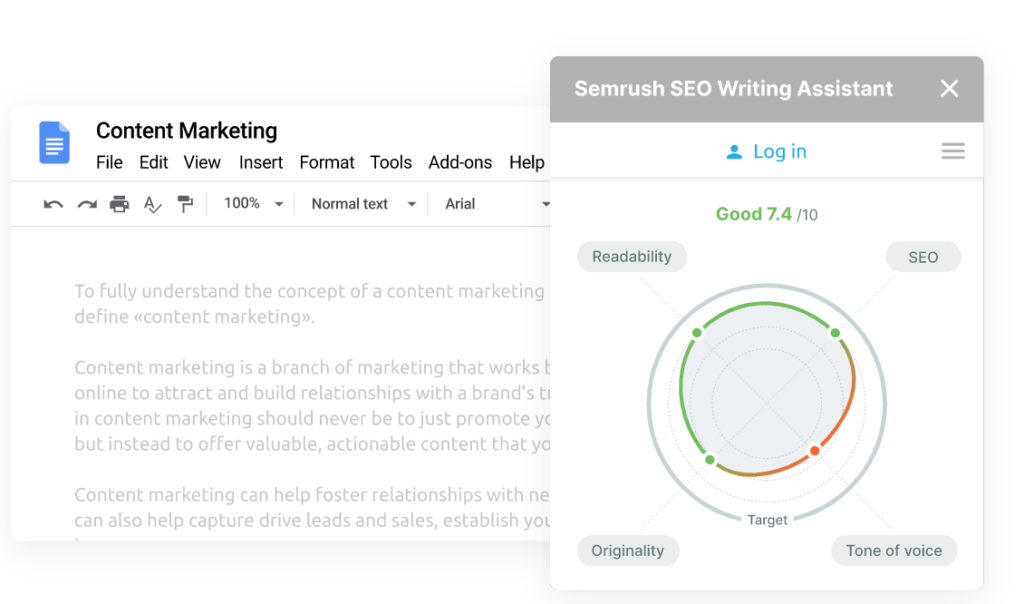
After reviewing the scores, you can identify areas for improvement. They offer various options to optimize content, such as clarifying your article headline, incorporating recommended keywords, adjusting the article length, ensuring the tone sounds natural and casual, and checking for plagiarism.
3.) Surfer SEO
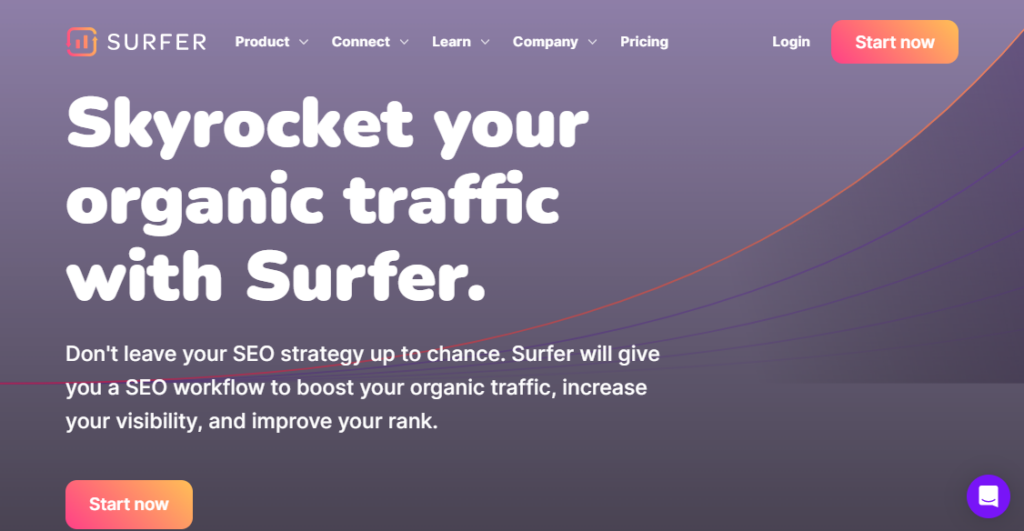
Surfer SEO is a tool that assists you in writing high-ranking articles that are easy to read. It helps you organize your posts, provides a list of relevant keywords to include, and provides real-time feedback on how to optimize your content.
This software offers comparable features to Clearscope at a more reasonable price. When you upload your content into the application, it provides you with a content score, highlights which keywords you are and aren’t using, and provides an outline of the blog post’s structure.
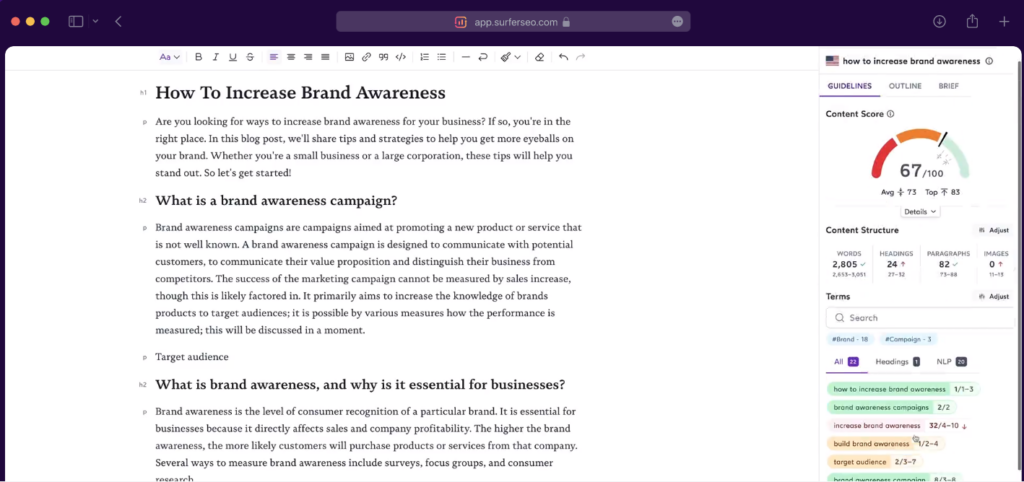
In addition, it provides an audit that recommends actionable steps to enhance your content, a keyword research tool, and a page speed comparison tool that lets you know if your page’s loading time needs improvement.
5.) Clearscope
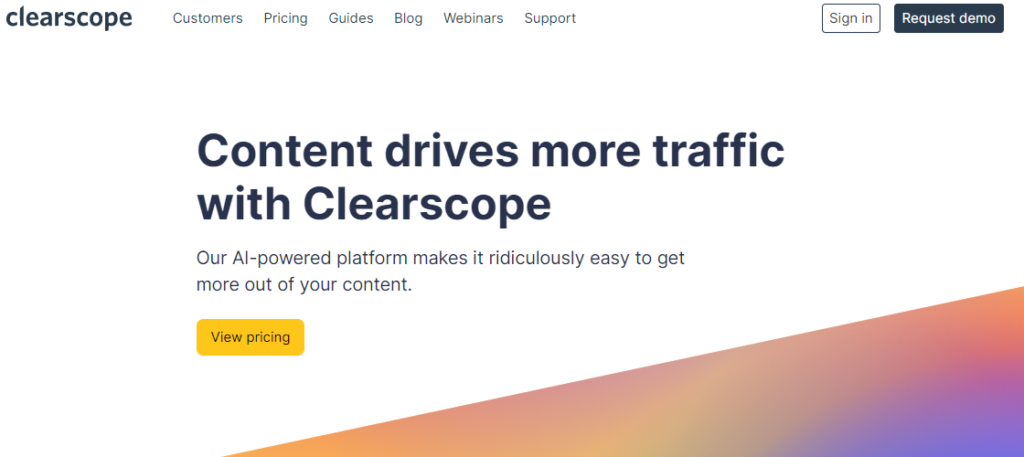
Clearscope provides a variety of tools to help you optimize your online content. It can assist you with determining the keywords to use, the questions to answer, the article structure, the ideal post length, and how to enhance readability.
To generate a report, you can enter a query, such as a post title, and it will analyze relevant content from your competitors to identify which keywords should be in the title tag, post, and more.
After that, you can paste your article content to see how it can be improved. This will display the post length compared to your competitors’ average length, and the readability level.
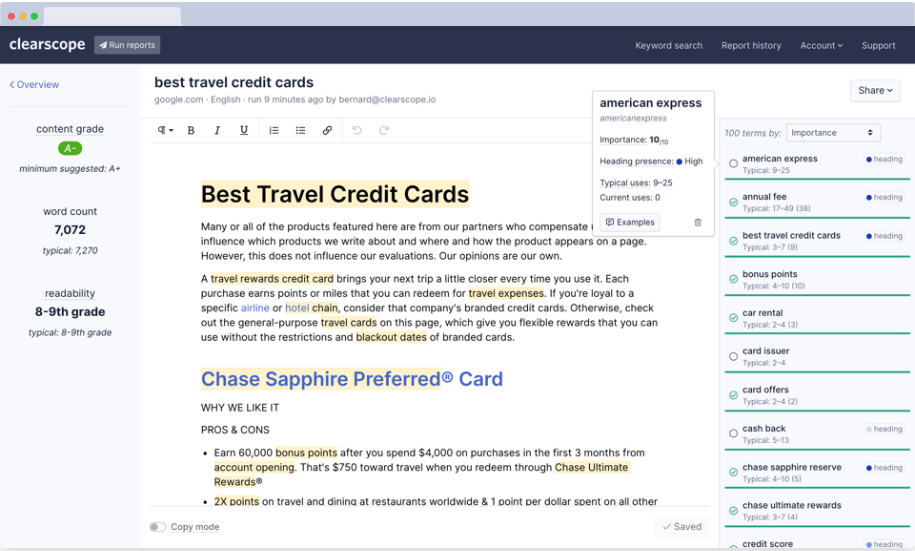
You will receive a list of essential keywords, and those already included in the post will have a checkmark next to them. At the top left of the screen, you will find a content grade, which can be enhanced by adding keywords that are not yet present in the post.
Another feature is a Keyword Discover tool. After typing in a keyword, you will get related keywords, questions relevant to that keyword, and trending keywords.
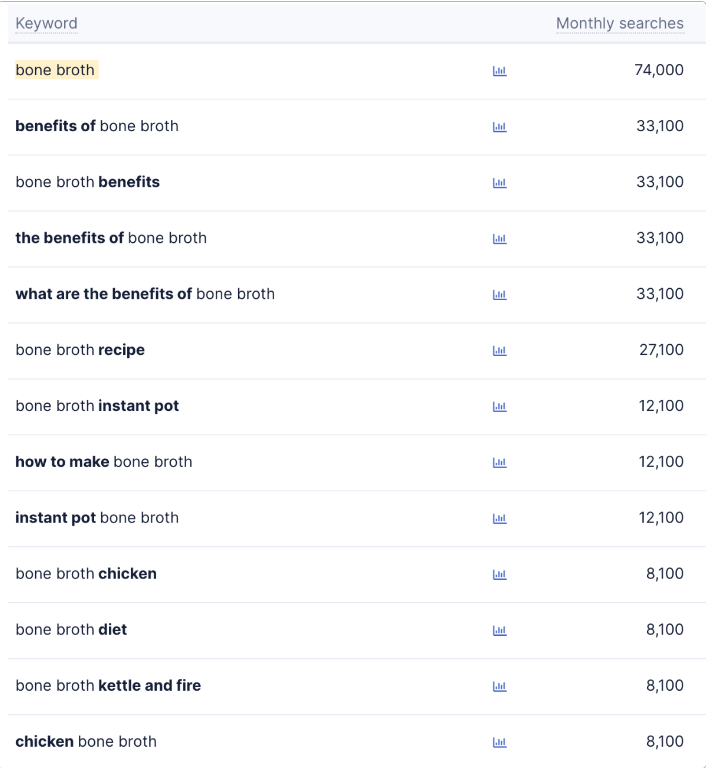
6.) MarketMuse
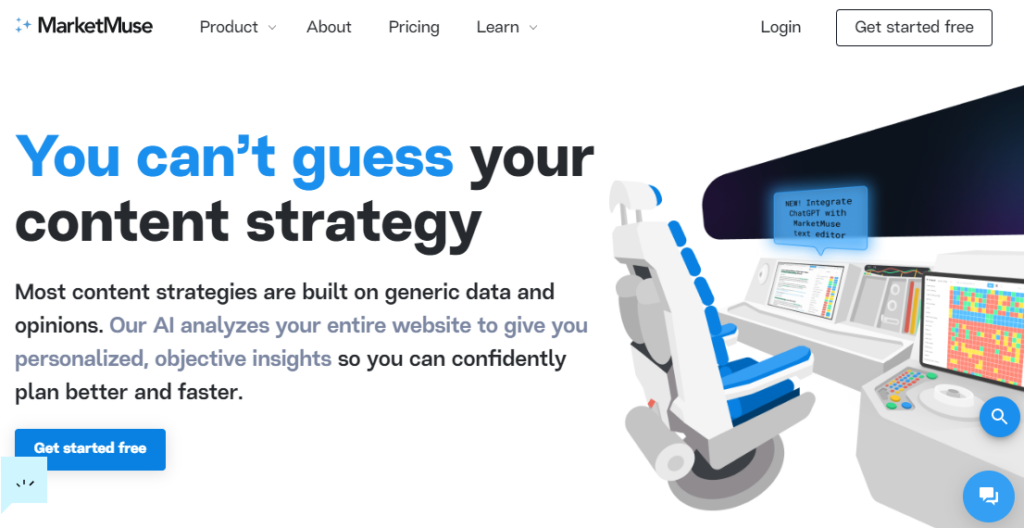
MarketMuse is a powerful content optimization tool designed for large businesses and enterprises. It provides a suite of applications to help with research, competition analysis, and content optimization.
One of its unique features is the personalized difficulty score, which examines your existing content against similar articles on other websites. Unlike other tools that rely solely on keywords, it analyzes the natural language used in your content to suggest relevant topics that can be added to improve your post.
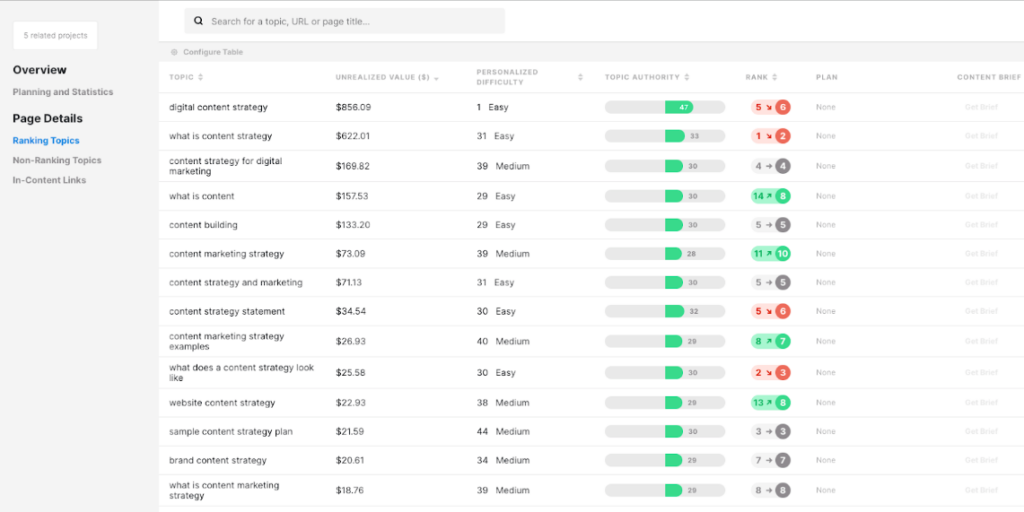
Additionally, they offer tools for conducting keyword research and competitive content analysis. By comparing the strengths and weaknesses of your competitors’ content, you can identify opportunities to create content that fills the gaps and outperforms them.
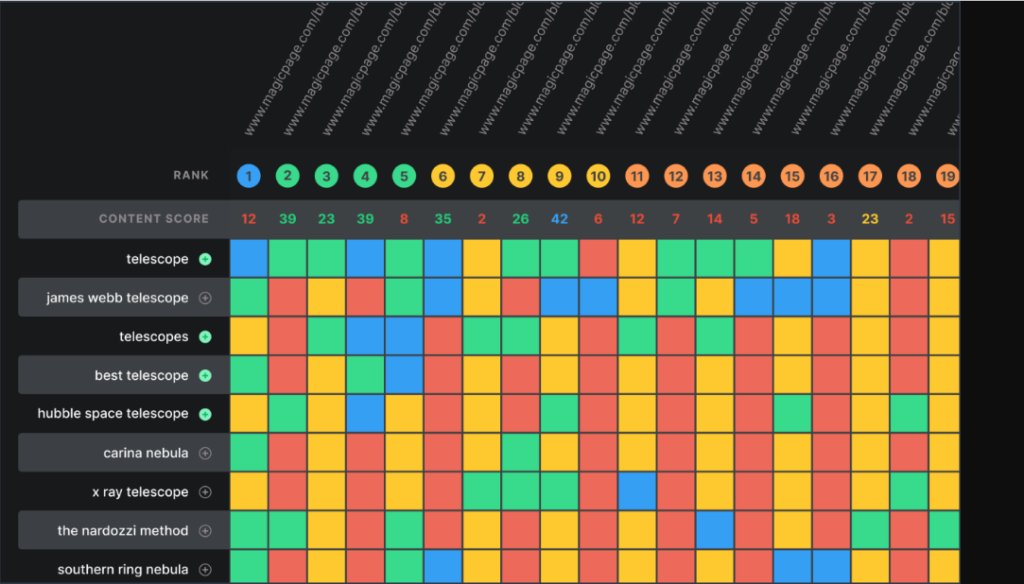
7.) Frase
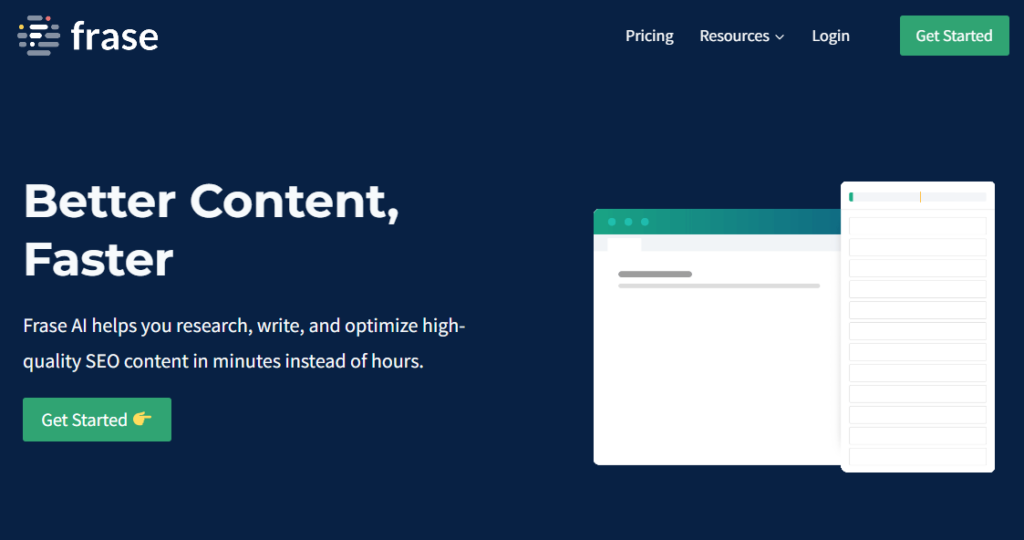
This content optimization tool can help you with target keywords, identify relevant content to include in your post, and create a smart outline for your content on a great budget.
After you have written or pasted your content, Frase will display smart insights on the right side of the screen. It will also provide a content score to show how much the content needs to be improved.
In addition, the tool uses artificial intelligence to suggest transition words that add interest to your writing, autocomplete or rewrite sentences for you, and recommend topics to include in your post by analyzing the most popular Google search results.
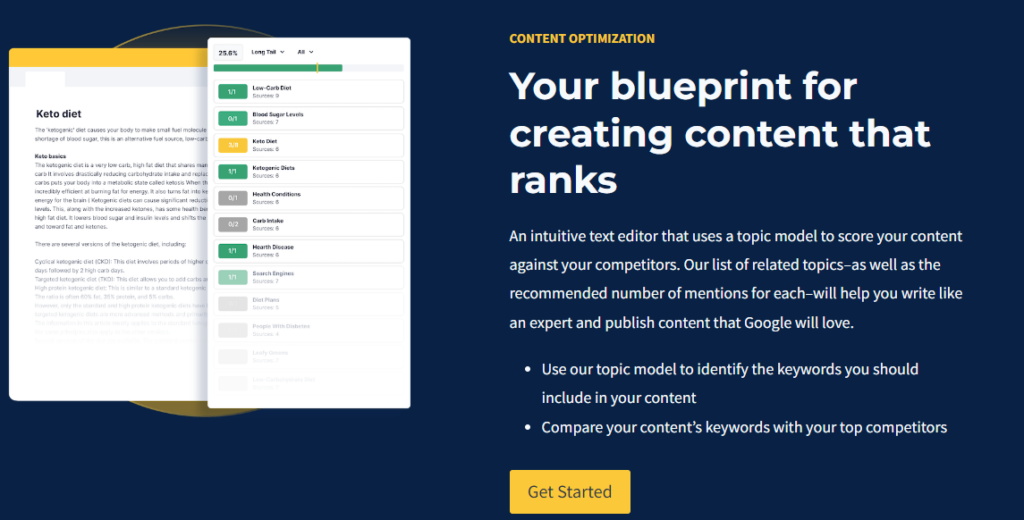
8.) Headline Analyzer
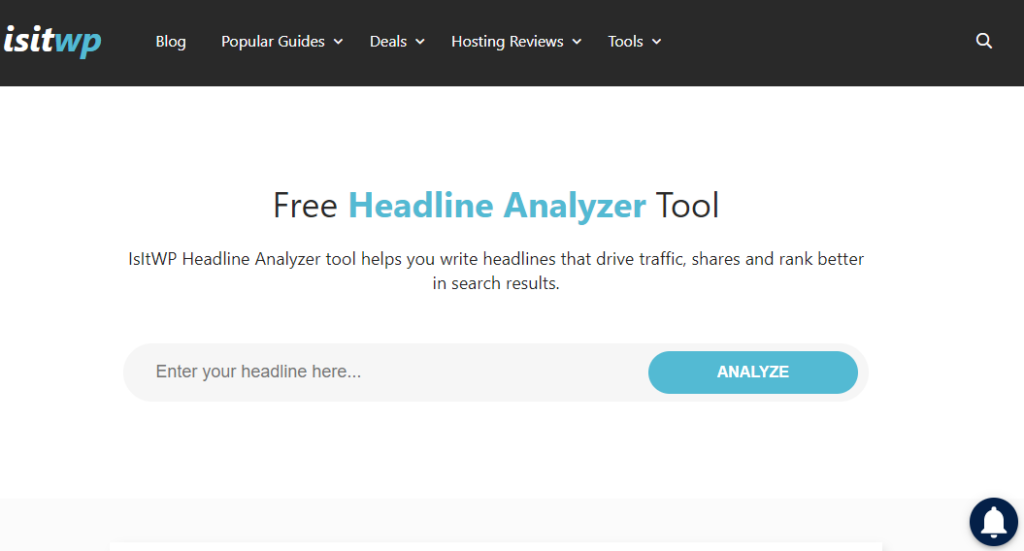
Headline Analyzer is a free tool that provides data-driven insights and suggestions for creating engaging and click-worthy headlines for SEO titles.
It helps beginners create a headline that instantly captures users’ attention and gets them to click on the website link. You can enter your blog title, and the tool will give an overall content score along with suggestions to improve it.
The tool also tells if your page title needs to be longer or shorter to display properly on SERPs and shows a preview of how your blog will appear in Google search results.
5 reasons why search engine optimization important
- Increased visibility: SEO helps websites rank higher in search engine results pages (SERPs), making them more visible to potential visitors and customers.
- Improved user experience: SEO involves improving website structure, navigation, and content quality, which can result in a better user experience and higher engagement rates.
- Higher credibility and authority: Websites that rank high in SERPs are generally perceived as more credible and authoritative, leading to increased trust and brand reputation.
- Higher conversion rates: SEO and content optimization can lead to higher website traffic, engagement, and conversions, resulting in increased revenue and business growth.
- Competitive advantage: By content optimization on their website for search engines, businesses can gain a competitive advantage over their competitors, especially in crowded markets.
Why relevant keywords matter
Keyword research helps you identify the most relevant and popular keywords and phrases related to your industry, products, or services. By using these keywords in your content, you can improve your chances of ranking higher in search engines and driving more traffic to your website.
By understanding the keywords and phrases your audience is using, you can write content that is targeted to their needs and interests. This can help increase engagement, as you are satisfying search intent and improve your chances of converting visitors into customers.
By content optimization with relevant keywords and phrases, you can improve your website’s SEO and increase your chances of ranking higher in SERPs. This can lead to more traffic, higher engagement, and ultimately more conversions.
When optimizing content, you can also identify the keywords and phrases your competitors are targeting. This can help you stay competitive and identify new opportunities to differentiate yourself in the market.
Keyword research can also help you stay up to date with changes and trends in your industry. By monitoring the popularity of specific keywords and phrases over time, and optimizing content, you can identify emerging trends and adjust your content marketing strategy accordingly.
How search engines find keywords
To optimize your web pages for search engines, it’s important to include relevant keywords in the content and metadata of your pages. This includes using targeted keywords in the page title, meta description, header tags, and image alt tags. However, it’s important to use keywords in a natural and valuable way, rather than following the practice of keyword stuffing into the content in an unnatural or spammy way.
Optimize content “on-page”
On-page optimization refers to the practice of optimizing individual web pages. Several elements of on-page content optimization can help improve your website’s ranking, including the title tag, meta descron, the header tag, and image alt tag.
Title tags
They are an HTML element that states the title of a web page. They are displayed as the clickable headline on search engine results pages (SERPs). As an essential element of on-page optimization, they tell both search engines and users what your web page is about. To optimize them, make sure it accurately describes the content on your page, and try to keep the title tag between 50-60 characters.

Meta descriptions
A meta description is a brief summary of the content on your web page that appears below the title tag in SERPs. Although they don’t directly impact your website’s ranking, they can influence users’ decision to click through to your site. Make sure that your summary is related to the content of your page and include your first keyword. Keep the meta description under 120-160 characters.

Header tags
Also known as H1, H2, H3, etc., are HTML elements that define the headings and subheadings on your website. These tags not only help to structure your content, but also provide context to search engines about the content on your page. To optimize your header tags for your target keywords, make sure your H1 tag includes your primary keyword and the correct description of the content on your page. Use H2 and H3 tags to create subheadings that provide further context about the content on your page.
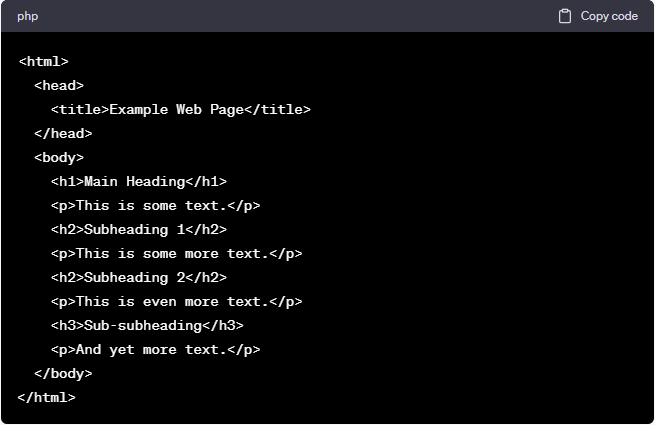
Image alt tags
These are HTML attributes that describe the content of an image on your website. Search engines use these alt text tags to understand the context of the image and how it relates to the content on your page. To optimize your image alt tags for your target keywords, make sure they accurately describe the image on your page and include your primary keyword. This will improve content optimization by helping search engines understand the content on your page better and increase your chances of ranking for your target keywords.
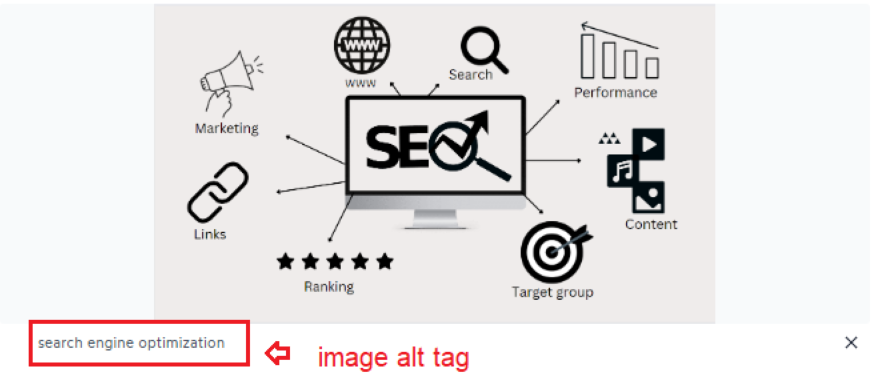
“Off-page” content optimization
Off-page optimization, which includes link building and social media marketing, is crucial to improving the search engine visibility and authority of a website.
Link building involves obtaining high-quality internal and external links from other reputable websites, which can signal to search engines that the website is trustworthy and authoritative. These links should include relevant anchor text and should be from diverse sources.
Social media content marketing, on the other hand, involves promoting website content through social media platforms to increase its reach and attract more backlinks. This can also improve brand recognition and engagement with the target audience.
Both link building and social media content marketing are important aspects of content marketing and can help drive more organic search traffic to the website, leading to improved search rankings and ultimately more sales or conversions. It’s important to use appropriate keywords and content that aligns with the target audience’s interests and needs to maximize the effectiveness of off-page optimization techniques.
4 Best practices for creating content: meet search intent
1.) Keyword research and high-quality content
Content optimization for search engines starts with keyword research to find semantically related keywords and relevant keywords to your audience and their search intent. Use these keywords to create high-quality content, including blog posts and web pages, with a clear title tag and meta description that accurately reflect the content.
Avoid keyword stuffing and instead, use appropriate keywords in the content, alt tags, and image tags, and vary sentence length to match user intent. Optimizing images, adding internal links, and creating quality content with bullet points and videos can improve visibility and user experience.
2.) Strategies for content optimization
Optimize your content with content optimization tools, such as Google Search Console, to analyze existing content, find keyword variations, and track search rankings and search authority. Review your page’s HTML to ensure that your page title, alt text, and meta tags are appropriate and aligned with your main target keyword.
3.) Optimize traffic with marketing
Finally, don’t forget to promote your content on social media sites. Also track user scrolls and the user journey to drive more traffic to your site. By optimizing your content, you can improve search engine results pages and attract more organic search traffic to your landing page or blog post, which can ultimately benefit your sales team.
4.) Call-to-action
A call to action (CTA) is a statement or phrase that encourages and prompts a user to take a specific action, such as making a purchase, filling out a form, or subscribing to a newsletter. The CTA is typically displayed as a button on a website, email, advertisement, or usually in the beginning of a blog post .
The purpose of a CTA is to guide users towards the next step in the conversion process and to make it clear what action they should take. Effective CTAs are specific, action-oriented, and create a sense of urgency or importance.
Examples of CTAs:
- “Shop Now”
- “Download Our Ebook”
- “Sign Up for Our Newsletter”
- “Get Your Free Trial”
- “Join Our Community”
5 ways to analyze your audience
1.Surveys
It can be a powerful way to gather insights directly from your target audience. Hence, use online survey tools like SurveyMonkey or Google Forms to create and distribute surveys to your audience. These surveys can help you gather demographic information. Especially, in nderstanding your audience’s pain points and challenges, to gather feedback on your content and products/services is possible this way.
2. Website analytics
Tools like Google Analytics can provide valuable insights into your audience’s behavior on your website. on one hand you can use these tools to track metrics like pageviews, bounce rates, time on site, and conversion rates. Therefore this data can help you understand which pages and content are most popular with your audience. You don’t have to think about identifying areas for improvement. anymore!
3. Social media insights
Platforms like Facebook, Twitter, and Instagram provide built-in analytics tools. Since they can help you understand your audience’s behavior on these platforms. Therefore you can use these tools to track metrics like engagement rates, follower demographics, and post-performance. This data can help you understand which types of content resonate most with your audience on social media.
4. Online forums and communities
Similarly it can provide valuable insights into your audience’s needs and interests related to your industry or niche. Given, that there are tools like Reddit, Quora, or Facebook Groups to search for relevant communities. Use them to monitor conversations to gather insights through them.
5. Customer feedback
You can also gather valuable insights from your existing customers. Opportunities are through feedback surveys or by monitoring reviews on third-party websites like Yelp or Google My Business. This feedback can help you identify areas for improvement and understand your customers’ pain points and challenges.
Why it’s important to understand your target audience
Understand your target audience’s needs, interests, and pain points, and create content that is relevant, valuable, and engaging. This can help increase engagement, drive traffic, and improve your search engine rankings.
When you create content that resonates with your target audience, you improve their overall user experience on your website. Optimize your content this way and increase engagement, reduce bounce rates, and ultimately lead to higher conversions.
It can also help you develop more effective marketing strategies. Find out what motivates your audience and where they are most active online. This information is useful when creating your marketing messages and reach them more effectively.
Content that resonates with your target audience, helps you build a stronger connection with them. This can help increase brand loyalty and ultimately lead to more repeat business and referrals.
+Bonus: Consider optimizing for mobile devices
Optimizing your content for mobile devices is a critical point. In today’s world, more and more people are accessing the internet through their mobile devices.
Use responsive design so that your website adjusts to the screen size of the device it is viewed on. This means that your content will be easy to read and navigate on both desktop and mobile devices
Large images can slow down your website’s loading time on mobile devices, which can negatively impact user experience. Optimize your images by compressing them to reduce their file size without sacrificing image quality.
Videos can also slow down your website’s loading time on mobile devices. To optimize your videos for mobile, use a video player that is compatible with mobile devices. Another tip is to compress your videos to reduce their file size.
Mobile users tend to have shorter attention spans. Therefore it’s important to use clear and concise headlines that grab their attention and communicate the main point of your content. Moreover, they tend to scan content rather than reading it word-for-word. Use short paragraphs, bullet points, and subheadings to make your content scannable and easy to digest.
Conclusion
Optimizing your content for search engines is crucial for improving your website’s visibility. In search results, this attracts more organic traffic. Keyword research can help you identify the right words and phrases to use in your content.
Using appropriate keywords in your content can help it rank higher in search engine results pages (SERPs). Optimize images and videos for mobile devices. This will result in increased quality of user experience and increased engagement with your content.
Utilizing tools like Google Search Console can provide you with valuable insights and data about your content’s performance. If you incorporate these strategies, then you can improve your content’s performance and make data-driven decisions to further enhance its effectiveness.
Remember to focus on user intent and provide high-quality, valuable content that meets your audience’s needs. A solid content optimization strategy will help you in numerous aspects. As you can enhance your website’s search engine ranking, drive more traffic, and ultimately achieve your business goals.
